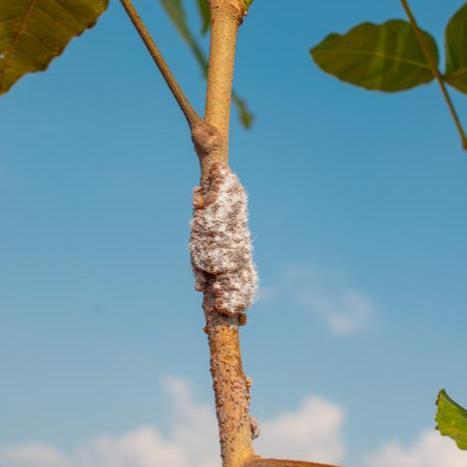The colourful pigment extracted from the lac insect may actually be produced by a symbiotic yeast-like organism living inside the insect, a new study by researchers at the Indian Institute of Science (IISc) has found. The team showed that the yeast-like organism exclusively harbours genes coding for key ingredients in the pigment synthesis pathway.

With its rich red colour, the lac pigment is a prized commodity used not only in food colouring, textiles, and dyes, but also in handicrafts and folk art.
READ MORE: Cures in crisis: vulnerable fungal species and their role in folk medicine
READ MORE: New species of insect-parasitising fungus discovered in lower Himalayas
“For thousands of years, India has been a key producer of the lac pigment,” says Shantanu Shukla, Assistant Professor in the Department of Developmental Biology and Genetics (DBG), IISc, and corresponding author of the study published in the Proceedings of the National Academy of Sciences.
The hunt for red
The lac insect grows on certain trees (like the “Flame of the Forest”), drinks its sugary sap, and secretes a sticky resin called shellac. It also makes a bright red compound called laccaic acid, which is used to make the pigment. How the insect produces laccaic acid has remained a source of mystery. For decades, scientists have unsuccessfully hunted for genes coding for its synthesis in the insect’s genome.
“The pathway for the pigment production was not very clear,” Shukla says.
One of the key ingredients required for laccaic acid synthesis is an amino acid called tyrosine, which the insect cannot make on its own or source from the tree sap. Such missing ingredients are usually supplied by symbiotic bacteria or fungi that live inside insect bodies and secrete these molecules in exchange for housing.
Two microbial candidates
The team sequenced the entire bacterial and fungal microbiome of the insect and zeroed in on two possible candidates: a bacterium belonging to the Wolbachia genus and a yeast-like fungus. Previous studies by other researchers had hinted at the presence of the fungus but had not identified it or sequenced its genome.
In the current study, the team found that neither the insect nor the bacterium carried the genes needed to make tyrosine and other components of the pigment pathway. But the yeast-like organism did – it carried the entire set of genes needed for laccaic acid production. This includes genes coding for various enzymes which catalyse the production of aromatic molecules that are the building blocks of laccaic acid.
One of the key challenges was growing lac insects that lacked the yeast-like organism in order to tease out the latter’s role, says Vaishally, first author and PhD student in DBG. “The fungus is uncultivable, and the insects themselves can’t survive outside their host plant in an artificial culture system. So, all our experiments had to be done using host plant-reared insects, which made it difficult,” she adds.
Fungus in oocyte
“What is very peculiar about the fungus is that … it is actually inside the insect’s oocyte [egg cell],” Shukla says. The fungus floats around in the insect’s haemolymph – the equivalent of animal blood – and as soon as the oocyte matures, it latches on to and enters the oocyte, and gets transmitted to the offspring that emerges from the oocyte. “This type of ‘vertical transmission’ is striking,” Shukla adds.
When the team sprayed a fungicide on the lac insects, they found that pigment production reduced, and the insect also shrank in size. This suggests that the insect likely relies on the fungus for other nutrients missing from its diet as well – a dependence shaped over millions of years of evolution.
“The yeast-like organism is central to this story in a way because fungal symbionts are not well understood in insects,” Shukla says. “This study highlights the importance of fungi in insect evolution.”







No comments yet